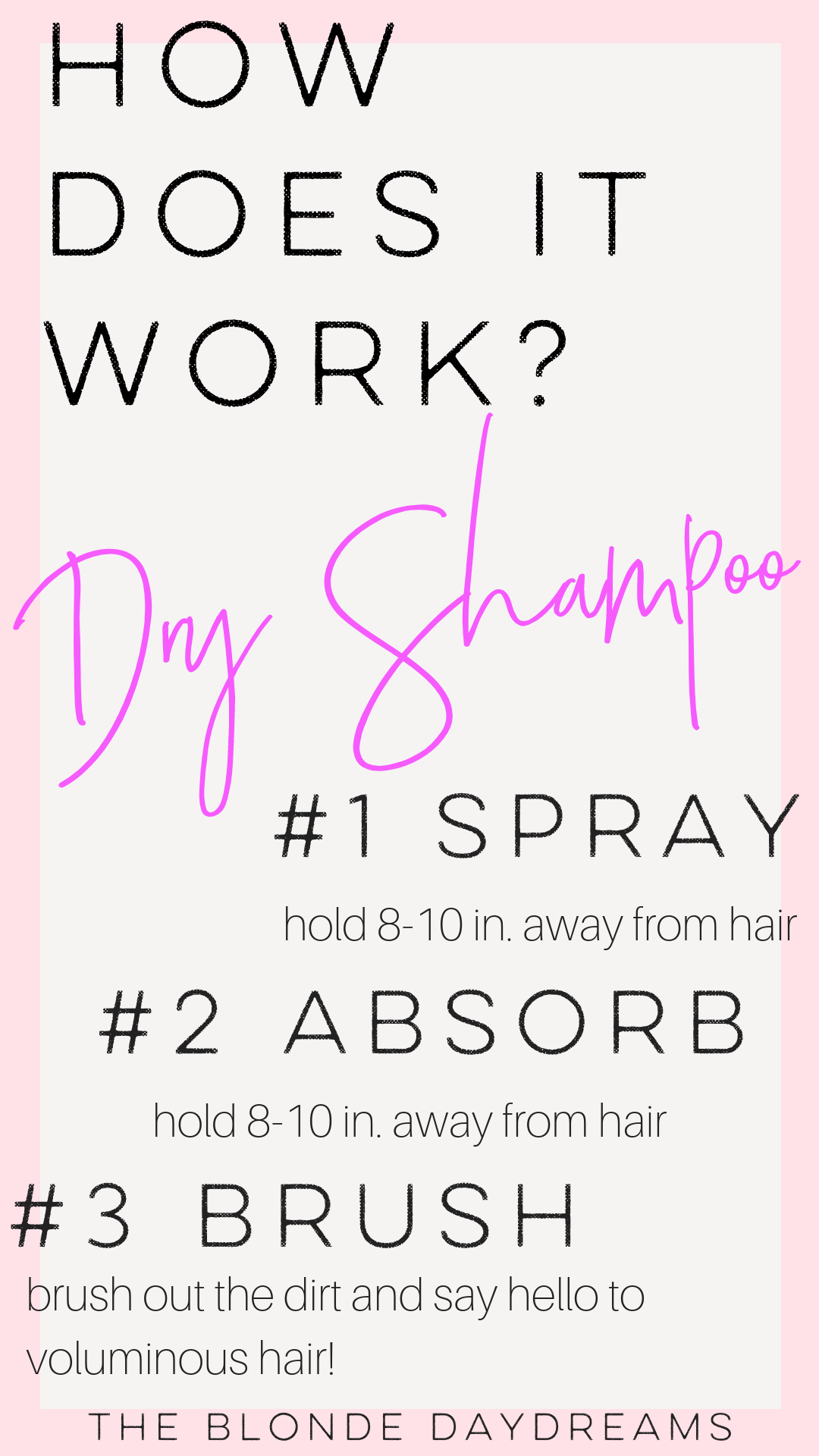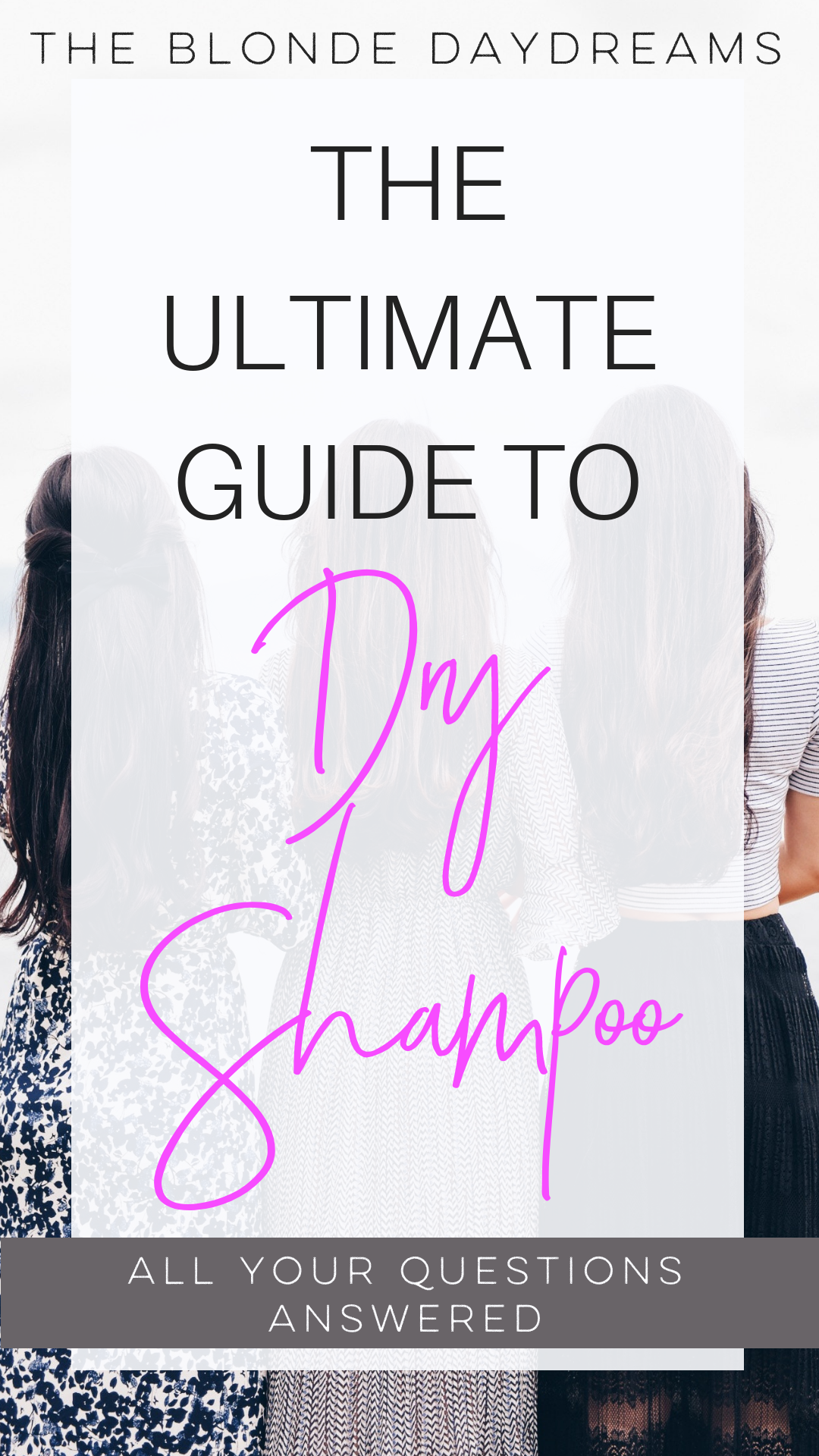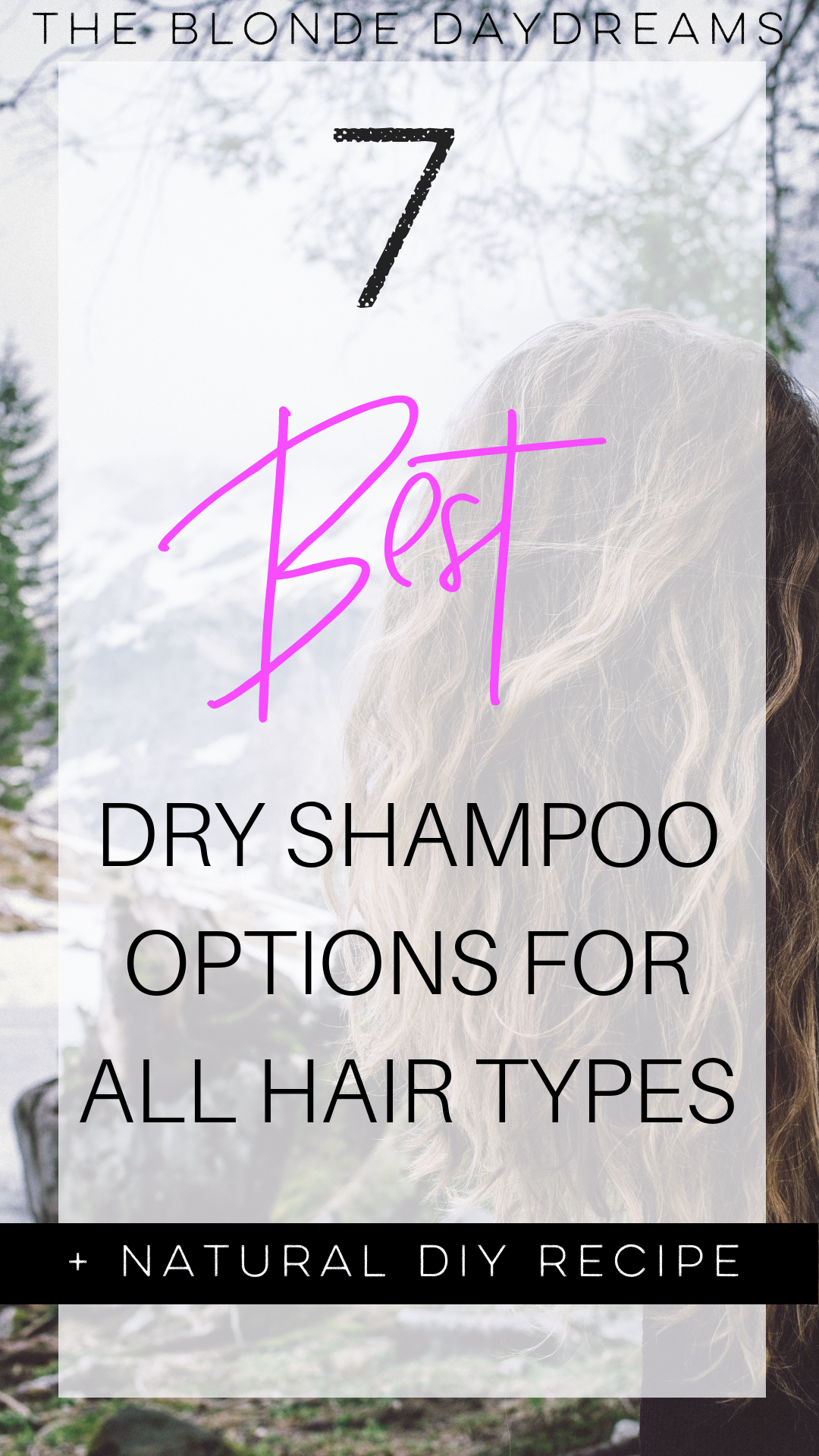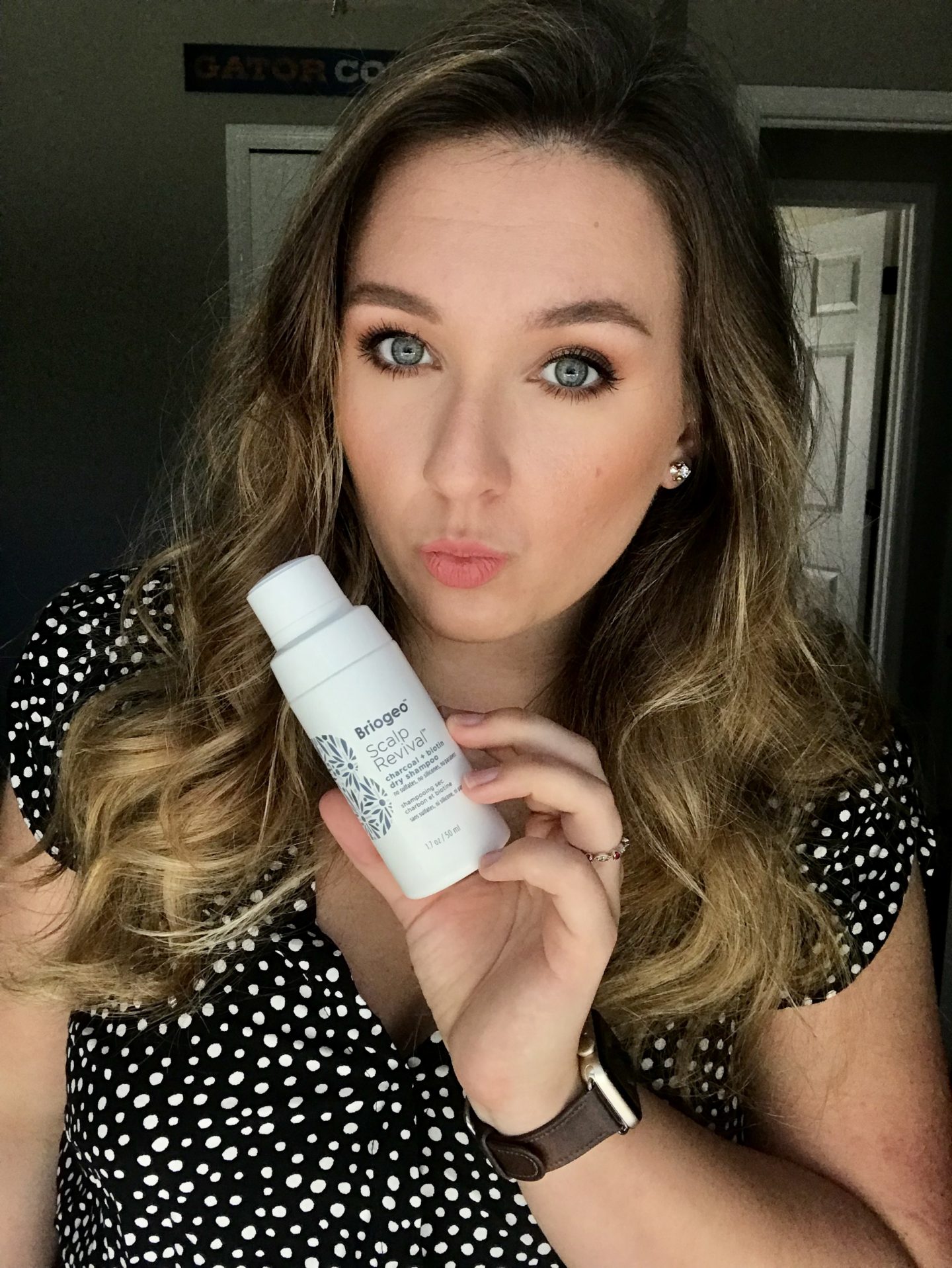What Exactly is Dry Shampoo?
So what exactly is dry shampoo? And what are the best ones? Is it going to make my hair fall out? If these thoughts are running through your head right now, keep reading!
There are so many options out there. Aerosols, tinted versions, powders you tap into your hair, even foams that apply like mousse. What works for one person might not work for you, and there’s a reason!
People have been trying to get around the process of washing their hair with soap and water for quite some time. Call it laziness or innovative, we like to cut corners when we can. All the way back to the 15th century to be exact. (We all know how little people bathed at all…) The original dry shampoo was cornstarch and similar starches. It was used to deodorize and color wigs. People still swear by cornstarch to this day, but it’s not on my top 5 best dry shampoos. It works in a pinch, but we’ve come a long way from that.
Fast forward a bit to the 1940’s and the first dry shampoo was on the market. Branded as “Minipoo,” it was targeted towards women who had surprise dates or other unplanned events and needed to look their best. Now I’m at the point in my life where I don’t have any unplanned dates, but I certainly use it for those days during the week that I don’t want to go through the whole hair process! Not to mention lazy weekends…

How to Use Dry Shampoo
Now for the good stuff. Let’s absorb that oil! If you’ve been following along now for awhile… First: thank you. Second: You know I live in Florida and complain about the humidity and what it does to me. I do not know how some girls can go 2 weeks without washing their hair. Mine itches and gets so clumpy and I can’t stand it. I can’t wash my hair at night without being oily by 3 o’clock the next day. If you relate to this on multiple levels, i.e. makeup, check out my post on long wearing makeup products for oily skin.
Before you tell me, “You just have to get used to it and train your hair! It’s better for your hair if you don’t wash it so much!” Yes I know, but that takes consistency and dealing with itchy gross hair for months. For now, I’m sticking to my every other day schedule. The fact that I had an overabundance of buildup and wasn’t getting it off my scalp meant I suffered from some hair loss.
I want you all to keep in mind that yes, it’s better to not wash your hair so often. It lets the natural oils reach the ends of your hair and it’s less frizzy and stripped. However, there are specifics to how you should use dry shampoo if it’s truly your goal to wash it less. It’s a process. If your goal is to go a week without washing you have to train your hair, and that means living with and managing the buildup. You want to wait as long as possible before adding in that dry shampoo to the buildup. My steps below are even more important if you’re doing this this process. Especially number 3!
Steps for Clean(er) Hair
- Section your hair perpendicular to your face (like a middle part). Spray or sprinkle your dry shampoo from 8-10 inches away at, and around the roots. Repeat by sectioning along the top of your head.
- Massage into your scalp. Try to pretend you’re at the hair salon when they wash and massage your head. Let that sit for a minute or two.
- Brush brush brush it out! And brush it out some more. Nothing should be sitting on your scalp now. Clear way the oil that’s now been absorbed into the powder. Plus you don’t want to have weird white spots in your hair. People might think you’re crazy… 😉

Tips + Tricks for Hair Health
But I don’t want my hair to fall out. Like anything, let’s use the rule of moderation. If you don’t drink 10 cans of diet soda a day every day, you’re probably gonna be okay. The same goes for dry shampoo. Don’t use it every day, and only use it when you really need it. If for some reason you need to use it back to back, remember step 3 – BRUSH IT OUT. This will allow your hair follicles to be able to breathe again. Regular fallout is expected though. We lose about 40-100 strands a day, so don’t freak out too much when you see hair coming out as you brush.
Tip #1
Don’t skip the step of brushing it out. This removes all of the gunk that’s been absorbed; get that out and off your scalp! It will also help prolong the effects of dry shampoo, because it won’t be weighing down your roots.
Tip #2
Use a brush with boar bristles or something similar. A comb won’t remove what’s been absorbed, you want something that will grab hold and get rid of the excess.
Tip #3
Don’t forget to add some dry shampoo at the nape of your neck. Trust me, it helps! You sweat and touch the back of your neck more than you know.
Tip #4
When you do wash your hair, be sure to wash it out thoroughly. I recommend using a clarifying shampoo to really unclog your hair follicles!

7 of the Best Dry Shampoos
Being the oily girl that I am, I’ve tried my fair share of dry shampoos, so I would consider myself somewhat of an expert. I do have my preferences though, so I’m going to put those on the table before listing my favorites. I look for:
- Best oil absorption (duh…)
- Non heavy and gritty. There’s nothing I hate more than the feeling of grit. Some people like this because it gives more volume at the roots. To that I say no thanks! I’ll use a texturizing spray for that.
- Not as important, but something to be noted. Sometimes companies make dry shampoo so overly perfumed and this bugs me. My picks smell good but are subtle. The reason these are overly perfumed is to cover up the…scalp smell. But if you’re not going a week in between washes you won’t need this.

Dry Shampoo DIY Recipe
If you’re in a pinch and can’t get the store to buy one of these, I’ve got your covered! I’m bringing you and easy dry shampoo recipe that you can make with things you probably already have in your pantry. If you’d rather not use aerosols to help out the environment, or are trying to save money, give this a try. You might like it even more! Even better, a simple addition to the base recipe makes it ideal for all my dark haired readers.
The number one thing to remember about using these natural versions is that they are harder to move through your hair. Your brushing routine with have to be even more thorough than before! Please don’t take this lightly, because things like cornstarch and arrowroot powder are more likely to clog your follicles if you leave them sit.
DIY Dry Shampoo:
- 1/4 cup cornstarch or arrowroot powder
- 2 tablespoons of cornstarch + 2 tablespoons of cocoa powder if you have dark hair
- (optional) add in a few drops of your favorite essential oil for scent
- cedarwood is great for the scalp and promotes hair growth
One way to apply this is to put it in an old baby powder type container. The finer the dispenser the better. Then you can sprinkle it into your roots and follow the how-to steps from above. Another option is to use an old makeup brush and dust it into your hair. This is probably the best way because it reduces the excess product, which means less brushing out after.
That’s my ultimate guide for dry shampoo! I hope that answered all of your questions. Be sure to follow me on instagram for more beauty and hair care tips!
Leave a Reply
You must be logged in to post a comment.